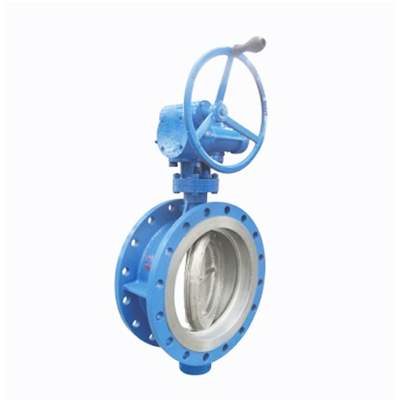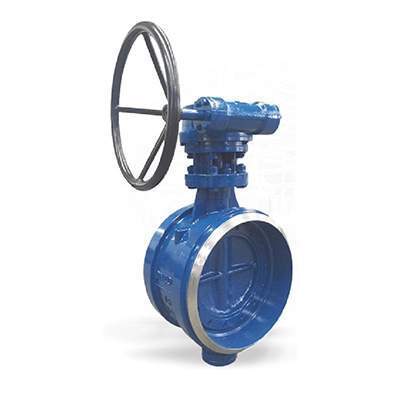Welcome to My Blog!
Before we dive into the content, if you’re interested in our products or have any questions, please feel free to visit our Contact Us page on the website. Our team is ready to assist you with inquiries, orders, or any support you may need.
Now, let’s get started on our journey together. I hope you find the content here insightful, engaging, and valuable.
Introduction

Butterfly valves are widely used in industrial systems to control fluid flow efficiently. In high temperature and high pressure environments, valve selection is critical to ensure safety, reliability, and long-term performance. Choosing the wrong valve type can result in leakage, system downtime, or even catastrophic failure.
This article explores the main butterfly valve types suitable for high temperature and pressure applications, their design differences, materials, sealing options, and installation methods, helping engineers and plant operators make informed decisions.
Single Offset Butterfly Valves (Concentric Type)
Single offset butterfly valves, also known as concentric valves, feature a centrally aligned disc and are simple in design.
Advantages:
- Lightweight and cost-effective
- Easy to maintain
Limitations:
- Not suitable for high pressure or high temperature
- Limited sealing performance
Applications:
Due to their design limitations, single offset valves are generally unsuitable for demanding high-temperature, high-pressure systems.
Double Offset Butterfly Valves (Double-Eccentric)
Double offset valves have a disc offset from both the shaft and seat, reducing friction during operation.
Performance Benefits:
- Improved sealing and durability under higher pressures
- Reduced wear on the seat and disc
- Suitable for moderate temperature and pressure conditions
Applications:
Double offset valves are commonly used in steam, industrial water, and chemical pipelines that experience moderate high-pressure operations.
Triple Offset Butterfly Valves (Triple-Eccentric)
Triple offset butterfly valves are engineered for the most demanding applications. The triple-eccentric design moves the disc away from the seat during rotation, minimizing contact and providing a metal-to-metal seal.
Performance Benefits:
- Bubble-tight sealing under extreme pressure and temperature
- Long service life due to minimal friction
- Low operating torque
Applications:
Triple offset valves are ideal for high-pressure steam lines, petrochemical processes, power plants, and other high-temperature, high-pressure environments.
Wafer, Lug, and Flanged Butterfly Valves
Connection types are important for installation and maintenance in industrial pipelines.
- Wafer Valves: Positioned between two flanges; economical and compact
- Lug Valves: Bolted on both ends; allows one side disconnection without shutting the system
- Flanged Valves: Robust, suited for high-pressure pipelines
Choosing the correct connection type ensures operational flexibility and safety.
Materials and Sealing Options for High-Temperature Applications
Material and seal selection are critical in high-temperature and high-pressure environments:
Materials:
- Stainless steel: High corrosion and temperature resistance
- Alloy steel: Handles extremely high pressures
- Inconel or nickel alloys: For corrosive, high-temperature fluids
Seals:
- Metal-to-metal for extreme temperatures
- PTFE or graphite for chemical compatibility
Proper material and seal selection maximize safety, reduce maintenance, and prolong valve life.
Actuation Methods for Industrial Butterfly Valves
Manual Operation:
- Suitable only for smaller, low-torque valves
Electric and Pneumatic Actuators:
- Provide precision and automation for large-scale systems
- Essential in high-temperature and high-pressure environments where manual operation is unsafe
Automation ensures consistent operation and reduces human error.
How to Choose the Right Butterfly Valve for High Temperature and Pressure
When selecting a butterfly valve, consider:
- Pressure and temperature rating: Must meet system specifications
- Fluid type: Steam, water, or chemical properties
- Material compatibility: Prevent corrosion and wear
- Sealing requirements: Metal seals for high-pressure steam, soft seals for moderate temperatures
- Maintenance needs: Ensure easy inspection and replacement
A well-chosen valve improves system efficiency and safety, reducing long-term costs.
Common Issues and Troubleshooting

Even industrial-grade valves can experience issues if improperly selected or maintained:
- Leakage: Often due to worn seals or incorrect installation
- Sticking or sluggish operation: Caused by debris or thermal expansion
- Signs of replacement: Excessive leakage, visible wear, or actuator failure
Routine inspection, proper material choice, and preventive maintenance minimize operational risks.
Conclusion
Triple offset butterfly valves are the preferred choice for high-temperature and high-pressure systems, offering exceptional sealing and durability. Double offset valves may be used for moderate conditions, while single offset valves are generally unsuitable. Choosing the right connection type, materials, seals, and actuation method ensures optimal system performance.
For engineers and operators, understanding these valve types and their applications allows for informed decisions, improving safety, efficiency, and reducing downtime in demanding industrial environments.
FAQ
What butterfly valve type is best for high temperature and pressure?
Triple offset butterfly valves are ideal due to their metal-to-metal sealing and durability under extreme conditions.
Can double offset valves handle high pressure?
Yes, double offset valves are suitable for moderate high-pressure systems but may not perform well under extreme temperatures.
What materials are recommended for high-temperature butterfly valves?
Stainless steel, alloy steel, or nickel-based alloys are commonly used to withstand heat and corrosion.
Which connection type is safest for high-pressure pipelines?
Flanged butterfly valves provide robust connections ideal for high-pressure systems.
How can valve failure be prevented in extreme environments?
Regular maintenance, proper material and seal selection, and choosing the correct valve type ensure reliability.
Need Help Choosing the Right Butterfly Valve for High-Temperature Systems?
If you’re unsure which butterfly valve type is best for your high-temperature and high-pressure system, our experts are here to help. Contact us today for a personalized consultation and ensure your system operates safely and efficiently. Don’t wait until problems arise—get in touch now to protect your infrastructure!
